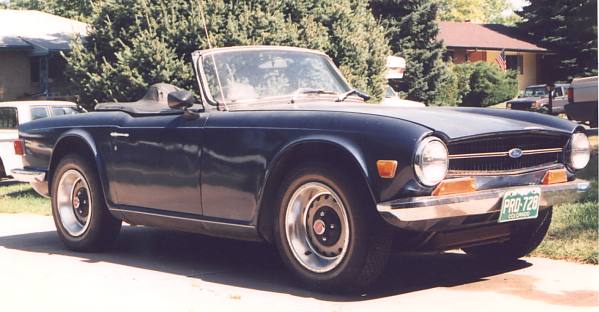
Bill Llewellin's Triumph TR6, powered by a Ford 302cid V8
(as recorded by Dan Masters)Just in case you think that these types of conversions produce cranky, unreliable, monsters, Bill Llewellin has been driving his V8 conversion for over ten years with no problems.
Bill has provided the following tech data for his conversion:
O.K. here are the long awaited pictures of how I did my car. I'm using a 79 302 from a Bronco, with a 92 T5 from a Mustang GT. In the first picture you can see how I handled the clutch. The T5 is a cable clutch and has a softer spring with longer travel than the earlier hydraulic ones. I made the slave cylinder to 0.687 ID, which is as small as you can get brake cylinder seals to fit in it. This, with a Datsun PU master cylinder gives the right amount of travel. I don't know why the stock master cylinder wouldn't work just as well, but I didn't have one and the Datsun is a drop in if you get the bolts along with the cylinder. The stock Ford cover fit over this assemblage after cutting out the aft end a bit.
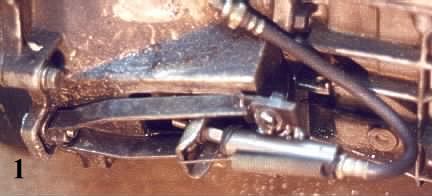
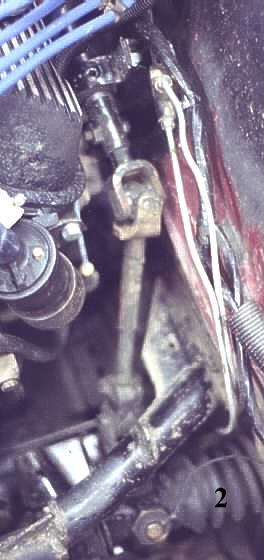

Picture #4 shows the new left hand engine mount attached to the frame longeron. Note that the old ones were completely removed from the front suspension towers. Note also that the new ones have three holes in them. I have completely forgotton why I put in the third hole. My engine mounts are from a 65 Galaxie, which was the donor car for the 289 that I put in originally. I added a bracket to them to mate with these mounts, as putting in the long longitudinal bolt would have been nearly impossible. Or at least that's how I saw it. Picture #5 shows the right hand engine mount. Same story here.
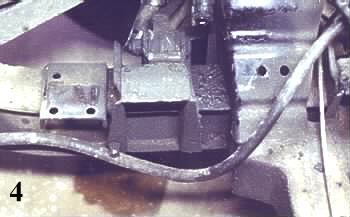
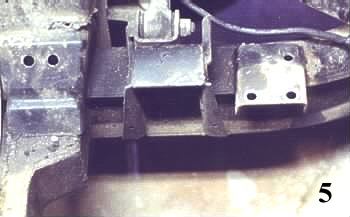
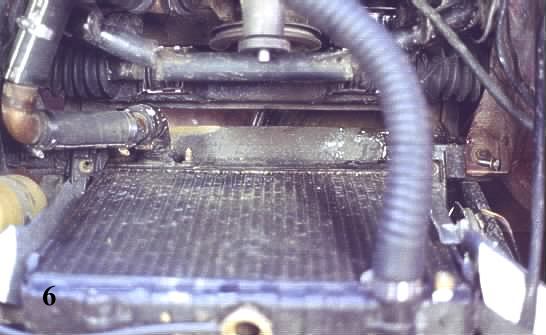
Sorry, no picture of the tranny mount adapter, I spent some time at the
NAPA store and got the one with the lowest overall height. I think it
matches the one from the old T4 I put in originally, but I'm not sure.
The adapter is U-shaped, and hangs from the original trans mount
brackets and passes under the new tranny.
I built a new tranny tunnel out of aluminum. I couldn't use the original tunnel is because I needed to trim away a bit of the firewall to clear the rocker covers, about 2" x 2" on each side, looking vertically down.
I'm using stock late 70's iron headers, which tuck in close to the block and point downward on the left hand side. The motor will NOT fit into the TR-6 with the stock fuel pump and oil filter on it. So I'm using an electric pump and a remote mount oil filter adapter. The adapter points at the small gap between the wheel well and the frame, so I put the filter low on the rear surface of the drivers side wheel well.
Springs are aftermarket stock, front shocks are Chrysler, rear shocks are Bronco on homemade adaptors. Rear axle is stock TR6.
- Bill Llewellin
I built a new tranny tunnel out of aluminum. I couldn't use the original tunnel is because I needed to trim away a bit of the firewall to clear the rocker covers, about 2" x 2" on each side, looking vertically down.
I'm using stock late 70's iron headers, which tuck in close to the block and point downward on the left hand side. The motor will NOT fit into the TR-6 with the stock fuel pump and oil filter on it. So I'm using an electric pump and a remote mount oil filter adapter. The adapter points at the small gap between the wheel well and the frame, so I put the filter low on the rear surface of the drivers side wheel well.
Springs are aftermarket stock, front shocks are Chrysler, rear shocks are Bronco on homemade adaptors. Rear axle is stock TR6.
- Bill Llewellin

